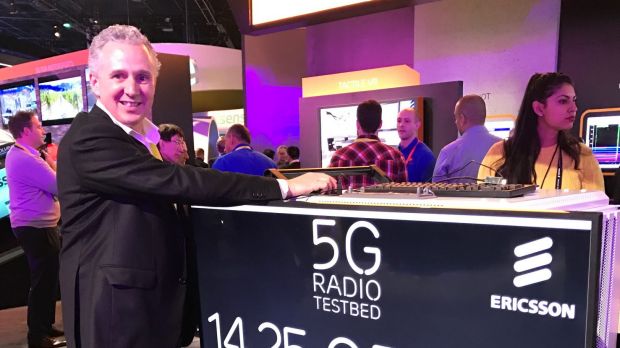Australia might be getting access to 5G data speeds sooner than expected with the communications regulator fast-tracking preparations to auction the necessary spectrum off to mobile network operators.
Speeding up the long process may bring forward revenue for the government, but also the capital expenditure costs for mobile network operators like Telstra, Optus, Vodafone and TPG.
Spectrum auctions have reaped at least $3.5 billion since 2013, including world-record prices spent on lower frequencies, which are more valuable to Australian operators because they carry signals further and with better penetration.
The Australian Communications and Media Authority on Monday revealed it is speeding up the process to release and sell part of the spectrum for 5G services – at the 26 gigahertz (GHz) frequency – which is currently reserved for fixed communications, space-to-earth signals and radio astronomy.
Planning is already well underway to release spectrum at 3.6 GHz frequencies for 5G with an auction expected in late 2018 to early 2019, but following an industry meeting last week the ACMA decided 26 GHz may now be a candidate for accelerated release.
Higher frequencies carry data very well in dense city areas. Australia’s 3G and 4G networks currently use frequencies between 700 megahertz (MHz) and 2.1 GHz.
Normally the ACMA waits until after the International Telecommunications Union has decided which frequency should be adopted globally. But on Monday it revealed consultation on the 26 GHz release will start straight away, two years before the ITU’s 2019 conference.
“Unless there are significant reasons raised to the contrary, the ACMA will use the information garnered from this process and develop an options paper for release in the first quarter of 2018,” the regulator announced on Monday.
“This will inform a decision on whether to progress consideration of one or more [millimetre] wave bands to the preliminary re-planning phase of the ACMA’s mobile broadband strategy.”
International standards are needed to ensure network equipment and handsets can function in any country, which keeps costs down.
5G technology has lower latency compared to 4G – about 1 millisecond instead of 50 milliseconds – and features super-high speeds of about 1 gigabit per second (1GBps), and uses less power, which means batteries don’t have to be charged as often.
Chief executive of the Australian Mobile Telecommunications Association, Chris Althaus, said there was little risk Australia would end up adopting the wrong frequency by ACMA ”reading the tea leaves and getting on with it”.
“This band has got so much support globally so that we are certainly not going out of step,” he said on Monday.
It was still too early to say exactly when 26 GHz would come to market, but it is not heavily used at the moment so could be cleared quickly, he added.
South Korean mobile operators have already chosen 28 GHz for the world’s first commercial 5G network, to be rolled out for the Pyeongchang 2018 Winter Olympics.
Telstra’s annual results noted it plans to spend $15 billion on capital expenditure between 2016 and 2019, including spectrum. However, only the upcoming 3.6 GHz auction and renewals were discussed by management.
“We’re looking forward to working with the ACMA and others to ensure 5G services are made available as quickly as possible so that Australia can also be a world-leader in this technology,” a Telstra spokesman said on Monday.
“We recently conducted 5G radio testing at Ericsson’s 5G experience centre with tests in the lab delivering download speeds of greater than 20Gbps….Preparations are underway for our next 5G trial, which will take place on the Gold Coast in 2018.”
Telstra will use a special scientific apparatus licence during the trial.
An Optus spokesman said it “welcomes the ACMA’s proactive approach to progress consideration of mmWave spectrum for future 5G use”.
Source: http://www.smh.com.au/business/media-and-marketing/australian-regulator-fasttracking-upcoming-5g-auction-at-superhigh-frequency-20170911-gyewu4

